HIIT vs Steady State Cardio
 HIIT (high intensity interval training) has been at the top of the list for fat burning training, but does that make steady state cardio obsolete?
HIIT (high intensity interval training) has been at the top of the list for fat burning training, but does that make steady state cardio obsolete?
Whether your goal is to lose weight or get fit, cardio is an essential component to your workout program. You know that cardio is where you burn the most calories at one time and, not only that, cardio workouts strengthen your heart, lungs, and the muscles you’re working.
When we first started discovering cardio benefits, steady state training was the norm. You’d head outside for a walk or run or hit the treadmill and, chances are, you would stay at about the same moderate intensity throughout the workout.
In recent years, that has changed dramatically. High-intensity interval training (HIIT) is now the hot ticket. These workouts involve changing the intensity, working harder for certain intervals throughout the routine.
These shorter, more intense workout maximize your results while minimizing the amount of time you have to spend working out.
That sounds great, but is HIIT really better than steady state cardio? Which one should you focus on if you’re trying to lose weight and get fit? Even more important, can you enjoy your workouts if you’re working at such a high intensity?
HIIT has a number of benefits, including:
- Improved performance
- It improves insulin sensitivity
- It helps you burn more calories all day long
- It helps you burn more belly fat
- It improves your health
- Shorter workouts
HIIT has a number of unfavorable qualities, including:
- Can be extremely uncomfortable
- Isn’t great for beginners
- Increased risk of injury
- Can lead to burnout or overtraining
Steady State Cardio
Steady state or moderate intensity cardio is what many of us are used to. This involves exercising at a consistent speed and level of intensity for the entire workout. That would be at about level 4 to 5 on the perceived exertion scale.
The idea is to work at a level where you can talk with maybe just a little difficulty.
Steady state training also has some benefits such as:
- Less stress on the cardio respiratory system
- Increased endurance
- Improved health
- Faster recovery
- It improves your body’s ability to use fat
- It increases slow-twitch muscle fibers
- More enjoyable
Some of the disadvantages of steady state training include:
- The time factor
- Risk of overuse injuries
- Boredom
- Weight loss plateaus
Should You Do HIIT, Steady State, or Both?
With all that in mind, which one is right for you? The answer really depends on your fitness level and goals more than anything else. And keep in mind that experts don’t recommend doing HIIT more than twice to three times a week.
Best of Both Worlds
In a perfect world, you would have some mixture of both steady state and HIIT. For beginners, you can actually build up your endurance and stamina for HIIT training by starting with aerobic interval training.
That involves changing up your intensity just enough to push you out of your comfort zone, but not so far out that you’re miserable or breathless. This beginner interval workout is a great place to start.
As you practice, you can start to increase the intensity of your intervals from week to week.
The other key to working up to HIIT is consistency. Doing cardio on a regular basis is how you build the foundation that will allow you to work harder and get more out of your workouts.


